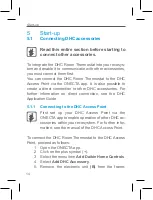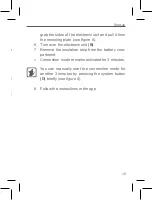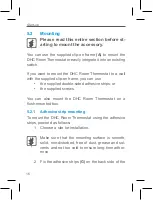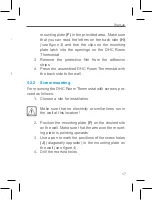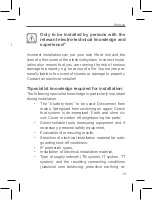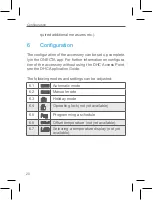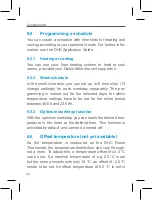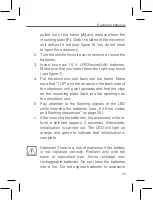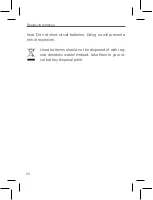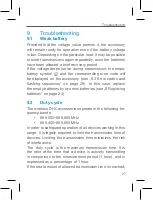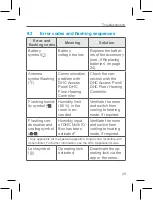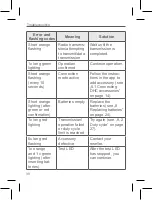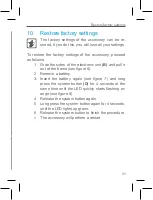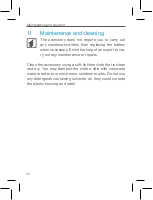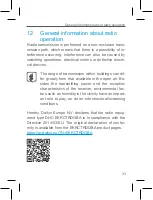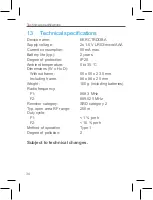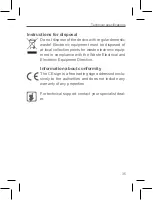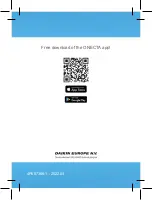
27
Replacing batteries
Troubleshooting
heat. Do not short-circuit batteries. Doing so will present a
risk of explosion.
Used batteries should not be disposed of with reg-
ular domestic waste! Instead, take them to your lo-
cal battery disposal point.
9
Troubleshooting
9.1
Weak battery
Provided that the voltage value permits it, the accessory
will remain ready for operation even if the battery voltage
is low. Depending on the particular load, it may be possible
to send transmissions again repeatedly, once the batteries
have been allowed a brief recovery period.
If the voltage drops too far during transmission, the empty
battery symbol ( ) and the corresponding error code will
be displayed on the accessory (see „9.3 Error codes and
flashing sequences“ on page 29
). In this case, replace
the empty batteries by two new batteries (see „8 Replacing
).
9.2
Duty cycle
The wireless DHC accessories operate in the following fre-
quency bands:
• 868,000~868,600 MHz
• 869,400~869,650 MHz
In order to safeguard operation of all devices working in this
range, it is legally required to limit the transmission time of
devices. Limiting the transmission time minimizes the risk
of interference.
The ‘duty cycle’ is the maximum transmission time. It is
the ratio of the time that a device is actively transmitting
in comparison to the measurement period (1 hour), and is
expressed as a percentage of 1 hour.
If the total amount of allowed transmission time is reached,
Summary of Contents for EKRCTRDI3BA
Page 1: ...Installer and user reference guide Daikin Home Controls Room Thermostat 2 EKRCTRDI3BA...
Page 2: ...2 1 A F C D E B...
Page 3: ...4 3 G H I J I J...
Page 4: ...6 5 K...
Page 5: ...8 7...
Page 36: ...Free download of the ONECTA app 4P687366 1 2022 04...


